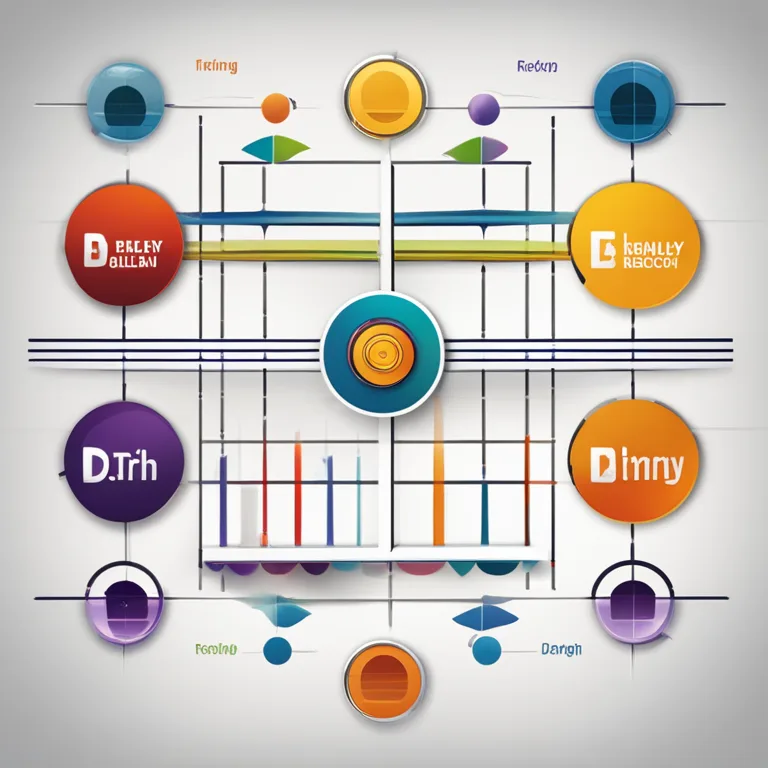
The Emotional Biorhythm: Sensing Life's Ups and Downs
Discover how your emotional biorhythm can influence your mood swings, relationships, and overall well-being.
article by Adrian Wallace
Introduction to Emotional Biorhythm
Understanding the concept of biorhythms can be a fascinating addition to one’s self-awareness toolkit. The idea posits that our lives are influenced by biological cycles, and one of the primary cycles is the emotional biorhythm. It is believed that from the moment we are born, our emotions ebb and flow in a patterned cycle lasting 28 days. This period is purported to affect our emotional stability, creativity, love life, and mood swings. As society edges into 2024, we aim to embrace a holistic lifestyle, shedding light on how these theoretical cycles can potentially guide us through life's turbulences.

Charting Your Emotional Highs and Lows
Charting your emotional biorhythm might seem like stepping into the world of astrology, but it leans more on the side of personalized biology. Proponents believe that by plotting these biorhythm charts, we can anticipate our days of emotional strength and vulnerability. Many individuals and therapists alike use these charts as a tool for scheduling important events, personal reflection, or relationship management. Moreover, technology advancements in biofeedback and emotional tracking have enhanced the understanding of personal emotional cycles through data, potentially offering a more quantifiable approach to this concept.

Impacting Relationships and Communication
Relationship dynamics can benefit from acknowledging emotional biorhythmic patterns. By understanding when we're likely to feel sensitive or outgoing, we can plan for heart-to-hearts or navigate conflicts with greater ease. A partner's awareness of their significant other's emotional cycle might foster deeper empathy and better timing in addressing sensitive topics. In 2024, apps and online services offering biorhythm calculations are increasingly integrating compatibility features to support emotional synchronization in relationships.

The Interplay with Mental Health
The role of emotional biorhythms in mental health is under investigation by fringe researchers, exploring if depressive episodes or anxiety could be correlated with certain phases of the emotional cycle. While not a substitute for professional psychological support, some individuals report using their biorhythm awareness as part of their coping toolkit. Mental health professionals, while mostly skeptical, acknowledge that patients finding subjective patterns and control in this system could potentially fortify their emotional resilience.

Emotional Biorhythm and Work-Life Balance
The workplace hasn't remained untouched by the implication of emotional biorhythms. Progressive companies looking to maximize employee well-being and productivity are considering biorhythmic analytics for organizing workload, deadlines, and collaborative projects. The timing of team-building events or demanding brainstorming sessions may also be scheduled when the majority of the team is within a positive phase of their emotional cycle, allowing for a more harmonious and creative work environment.
The Skepticism and Continuing Research
Emotional biorhythms, like any aspect of pseudoscience, are not without their skeptics. Critics argue that the 28-day cycle is arbitrary and lacks empirical support. However, continued research, particularly that which integrates emotional biorhythms with psychological and physiological data, might illuminate unknown connections. Our growing interest in personalized healthcare and wellness trends suggests a potential future where biorhythmic frameworks could intersect with evidence-based practices.
Published: 12/28/2023
Modified: 12/28/2023
More predictions
Come back here soon to learn more about yourself and your future


The Practical Uses of Biorhythms in Our Lives
Discover how biorhythms can be applied to improve well-being and achieve a better understanding of personal cycles in health, decision-making, and relationships.


The Concept of Biorhythm Compatibility
Discover the concept of biorhythm compatibility and its role in personal relationships in this comprehensive guide.


Biorhythm: The Significance of Compatibility
Discover the significance of biorhythm compatibility in relationships and how syncing life cycles can impact partnership dynamics.